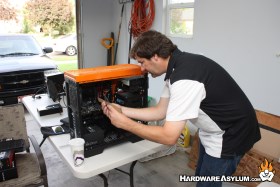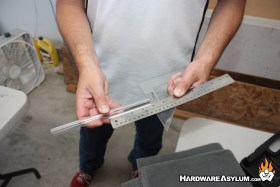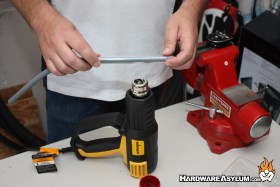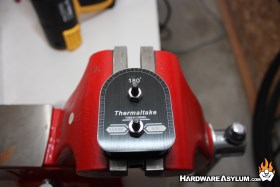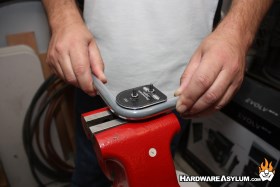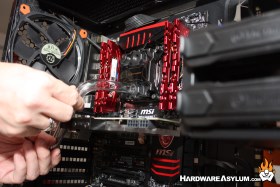Hardline Watercooling Loop Install using Pacific Cooling Gear
Author: Dennis GarciaBending PETG Hardline
There are a variety of ways to bend and install hardline tubing. Some folks take a calculated approach to ensure that every bend is in the perfect location. Systems done using this method look great but lack a certain degree of creativity and style that can only come from minor imperfections. Of course this can also be taken to an extreme that becomes unusable.
I might suggest a balance somewhere in-between for a couple reasons.
1) It is important that the loop be built so that it can be easily drained. Case in point if you have a tube that runs horizontal to the ground, then turns down only to turn up again will create a low spot in your loop. That will prevent liquid from draining and make flushing your loop difficult at best.
2) Efficiency of your lines. I am all for building loops with an abundance of extra liquid but you tend to go through more tubing to create these extra long runs. In the interest of building an efficient cooling loop you will want to find the shortest distance between your components.
Normally I would suggest running coolant in the following order.
Pump > CPU > GPU > Radiator > Res
Unfortunately with our pump res combo the outlet was located at the bottom of the case and would have created several redundant lines with tubes going up only to come back down only to go back up again. This would have created a valley in the loop that would never drain so it was decided to reverse the CPU and GPU to create the following loop.
Pump > GPU > CPU > Radiator > Res
In a way this is a better loop given how important video card performance is in a modern gaming PC. It also allows the loop to be drained without having to tilt the PC aside from a few degrees forward to empty the radiator.
Here I am using a ruler and triangle to gauge the distance between the ports on the CPU block and GPU block. What this does is give me a depth so I know approximately where the first bend needs to be. Note: An important thing to remember is that if you only have one bend in a tube you can get away with putting the bend anywhere in the tube and cut the ends to the length you want.
To keep the tube from collapsing you will insert a flexible silicon cord. This will allow the tube to keep its shape while you are doing the next step.
At normal room temperature the PETG tubing is extremely stiff, however if you heat it to about 190 degrees F it become soft and pliable. I have my heat gun set to 400 degrees F and position the tubing as shown to heat the area I want to bend.
It is important to rotate the tube and to heat about an inch in each direction to ensure that enough plastic is available to prevent it from stretching as that will alter the wall thickness and make things look weird.
Once the plastic has softened it will start to bend under its own weight (if the tube is long enough) you can take the tube over to the mandrel and bend to desired position.
Some people will suggest mounting the mandrels to a board and using the distances to help determine where bends should be. This is a great method as it can be efficient for those who are after a very specific configuration.
Thing is for me I have this uncanny ability to visualize things in my head so there is very little reason why I would need to spend extra time setting up a jig when I can do the very same thing by looking at it. Of course that doesn’t exclude me from making some mistakes. For instance getting the first tube run took several tries and when the bends were perfect it was installed.
After a few hours all of the connections were complete and it was time for an initial leak test.
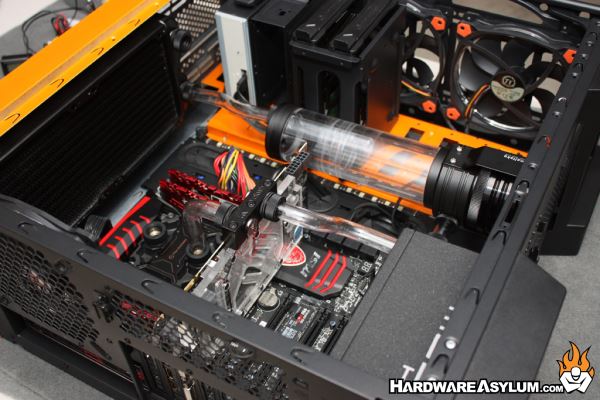
To keep things cheap we used distilled water. Not only is it clean and readily available but it can be used to flush the system before installing "the good stuff".

